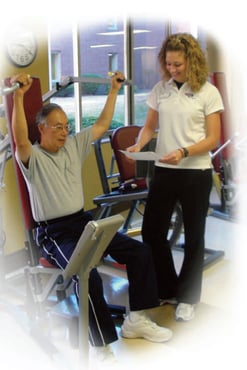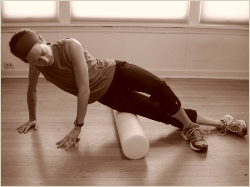 Of course, it’s horribly self-serving for us to say that staffing your onsite fitness center and wellness initiatives isn’t a DIY (do it yourself) project. We’re not above shameless self-promotion, but the truth is, the consequences of making fitness center management a DIY initiative can be costly. Read on to learn NIFS top three reasons to outsource fitness center management of your retirement community or worksite fitness center.
Of course, it’s horribly self-serving for us to say that staffing your onsite fitness center and wellness initiatives isn’t a DIY (do it yourself) project. We’re not above shameless self-promotion, but the truth is, the consequences of making fitness center management a DIY initiative can be costly. Read on to learn NIFS top three reasons to outsource fitness center management of your retirement community or worksite fitness center.
Reason #1: Your actual dollar cost is only part of the cost/benefit picture
If you’re reading this thinking, “Outsourcing is expensive – way more expensive than hiring my own personnel”, you’re right. Of course, costs come in two types: direct and indirect. So don’t stunt your thinking about this by looking only at the invoice from the outsourcing partner against your compensation profile for your own employee.
Reason #2: Outsourcing fitness center management provides expertise you can't build on your own
We would never lean toward such exaggerations as to say that health promotion, fitness, wellness (insert your favorite name for it here) is akin to rocket science. It’s not hard, like organic chemistry hard. But it’s challenging in that call center, customer service kind of way. Let’s face it, anyone one who works in customer service knows that the hardest, and most rewarding, part of their job is working with the customer. NIFS staff are in that same customer service spot.
To that end, there is a benefit to having a pool of like-minded peers who are doing the same type of work, sharing in successes, problem-solving through challenges, and brainstorming new ideas together. When you hire an outsourcing organization to provide your staffing, they have that built in peer support. When you hire your own wellness professional – they’re essentially on their own to build a peer network of support.
In NIFS case, the support network extends well beyond peer support. Our staff-built intranet provides program creation ideas, internal form links, peer-to-peer continuing education and more. All of these staff resources are a benefit to our clients. When they hire NIFS, they not only get their own manager, they get indirect access to our other 70+ like-minded professional peers.
Reason #3: Outsourced partners are experts in fitness so that you don't have to be.
Risk management related to both the physical spaces and the programming connected to those spaces is an important consideration for our clients. They don’t lose sleep over their liability exposure in our programs though. Maybe that’s because we’ve been managing corporate and CCRC fitness centers and wellness programs for more than 20 years. Maybe it’s because all of our staff -- administrators, managers, and specialists – are all fitness and wellness experts. We know the industry standards for waiver language, pre-activity screening, industry-appropriate certifications, subcontractor liability management, etc. Speaking of which, when was the last time you checked the status of the liability insurance for your contracted group fitness instructors?
For more on assessing liability in a corporate fitness program, download our white paper here.
To read about managing liability in a retirement community fitness center, download this white paper.
If you’re the “I’ll fix my own brakes” or, “I’ll build my own home addition” type, then you’re more adventurous then I and perhaps you should hire your own wellness professional. If you’re looking for an outsourcing solution that is more trustworthy and reliable than your mechanic, and less expensive than your home addition, consider checking NIFS out.
Read our case studies (Sagewood | Marquette | NextGear) to see how we’ve provided scalable and cutting edge solutions for our clients.

 It’s easy, when walking and talking with friends or coworkers, to follow their lead and get on the elevator. Time for a change? Try being the leader and lead them toward the stairs instead of the elevator. Not only will you get where you’re going faster by taking the stairs, but you will also burn more calories throughout the day.
It’s easy, when walking and talking with friends or coworkers, to follow their lead and get on the elevator. Time for a change? Try being the leader and lead them toward the stairs instead of the elevator. Not only will you get where you’re going faster by taking the stairs, but you will also burn more calories throughout the day.

 People everywhere are always searching for the best, most modern training device that will produce great results in the least amount of time. It is likely that you’ve tried the latest craze, yet you’re still searching for something more. Ironically, you may already own one of the most inexpensive yet effective training devices: the jump rope.
People everywhere are always searching for the best, most modern training device that will produce great results in the least amount of time. It is likely that you’ve tried the latest craze, yet you’re still searching for something more. Ironically, you may already own one of the most inexpensive yet effective training devices: the jump rope. There is never a better time to start than now. Pick up a jump rope and try this FREE workout.
There is never a better time to start than now. Pick up a jump rope and try this FREE workout. We don’t really know how other management companies do what they do for their clients; corporate fitness services aren’t easy to secret shop. But we are great at what we do – we’ve got the satisfaction survey feedback and
We don’t really know how other management companies do what they do for their clients; corporate fitness services aren’t easy to secret shop. But we are great at what we do – we’ve got the satisfaction survey feedback and  You may have seen foam rollers in your corporate fitness center and wondered what to do with them or how they benefit the body. Using a foam roller involves a technique called self-myofascial release. The idea is that when deep pressure is applied to areas that have been overworked or carry tightness, the soft tissue tension is released, allowing for better flexibility, improved performance, and decreased pain.
You may have seen foam rollers in your corporate fitness center and wondered what to do with them or how they benefit the body. Using a foam roller involves a technique called self-myofascial release. The idea is that when deep pressure is applied to areas that have been overworked or carry tightness, the soft tissue tension is released, allowing for better flexibility, improved performance, and decreased pain. Does the Insanity® workout really work? This is perhaps the most intense workout on the market today. It, along with P90X, has been put into the extreme fitness category. In my preceding post, I explored the positives of the Insanity workout. This post is dedicated to the precautions to be taken when participating in this style of workout.
Does the Insanity® workout really work? This is perhaps the most intense workout on the market today. It, along with P90X, has been put into the extreme fitness category. In my preceding post, I explored the positives of the Insanity workout. This post is dedicated to the precautions to be taken when participating in this style of workout. By now you’ve probably heard that mixing up your workouts is the thing to do. I think it’s important to mix up your strength exercises and cardio sessions. Here are my thoughts on elliptical workouts and walking and how to use them both.
By now you’ve probably heard that mixing up your workouts is the thing to do. I think it’s important to mix up your strength exercises and cardio sessions. Here are my thoughts on elliptical workouts and walking and how to use them both. A leader is someone who can guide, direct, or show the way. Wouldn’t you hope the leaders in your life have had experience or are educated on whatever matter they are pressing?
A leader is someone who can guide, direct, or show the way. Wouldn’t you hope the leaders in your life have had experience or are educated on whatever matter they are pressing? Of course, it’s horribly self-serving for us to say that staffing your onsite fitness center and wellness initiatives isn’t a DIY (do it yourself) project. We’re not above shameless self-promotion, but the truth is, the consequences of making fitness center management a DIY initiative can be costly. Read on to learn NIFS top three reasons to outsource fitness center management of your retirement community or worksite fitness center.
Of course, it’s horribly self-serving for us to say that staffing your onsite fitness center and wellness initiatives isn’t a DIY (do it yourself) project. We’re not above shameless self-promotion, but the truth is, the consequences of making fitness center management a DIY initiative can be costly. Read on to learn NIFS top three reasons to outsource fitness center management of your retirement community or worksite fitness center. 
 Ever wonder what and when you should be eating to optimize performance and energy levels? Numerous resources are available to the general public outlining
Ever wonder what and when you should be eating to optimize performance and energy levels? Numerous resources are available to the general public outlining